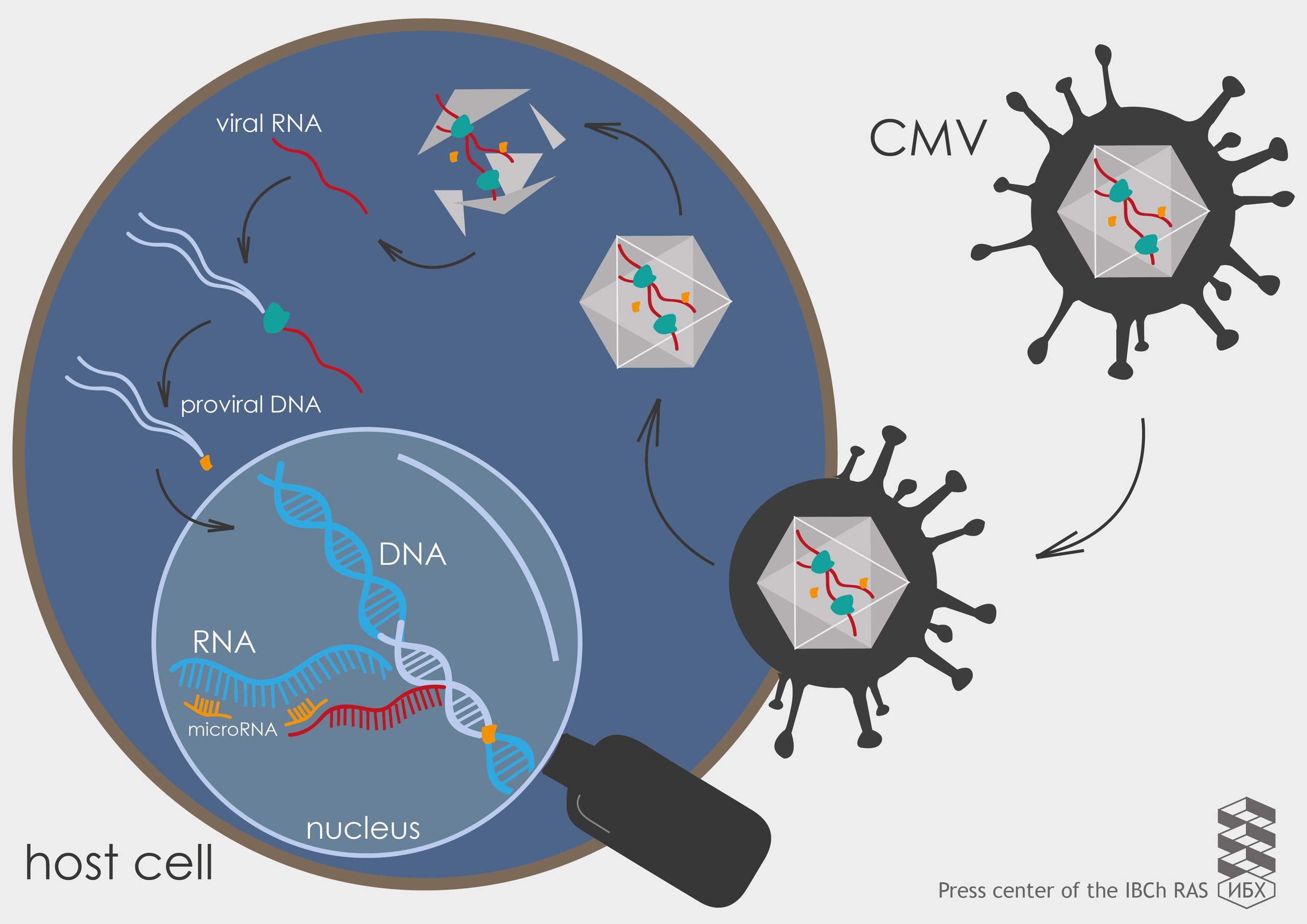Press-room / news / Science news /
CMV Infection "disarms" the cell, inhibiting microRNA synthesis – Scientists
Scientists from the M.M. Shemyakin and Yu. A. Ovchinnikov Institute of Bioorganic Chemistry of the Russian Academy of Sciences collaborated with their colleagues from the D.I. Ivanovsky Institute of Virology in Moscow, the Kurchatov Institute, and researchers from the University of Lethbridge (Canada) in groundbreaking research work. They discovered that, in its early stages, CMV Infection "disarms" the cell, blocking its protective mechanisms by inhibiting the synthesis of miRNAs. The results of this study were published in the Cell Cycle journal, and may further be used as a basis for creating fundamentally new ways of combating viral Infection.
Cytomegalovirus Infection (CMVI) is a viral disease that is characterized by a variety of clinical symptoms, ranging from an asymptomatic latent flow to some severe cases, some of which may be fatal. From the first year of birth, every fifth inhabitant of the planet becomes a carrier of CMV until somewhere near the age of 35. This constitutes about 40% of the global population and 90% of the demographic group below 59 years of age.
Using the OncoFinder and MiRImpact technologies, the researchers were able to carry out an in-depth study of the development of CMV Infection during the first three hours after infection.
Before this, the OncoFinder program had already actively assisted researchers in obtaining new knowledge on the development of a particular type of skin cancer – melanoma, in the human body. OncoFinder allows researchers to quantify the activity of different types of molecular paths – a sequence of molecules that are involved in the transfer of information within a cell. The MiRImpact method can be regarded as a continuation of the OncoFinder technology. It enables both the quantitative and qualitative analysis of the impact of microRNAs on the activation of intracellular signaling pathways. MicroRNAs are short RNA molecules that, instead of encoding proteins, play the role of a particular genetic "censor", regulating genes by suppressing their activity. These "censors' also control foreign RNA capable of inducing viruses into the cell. Thus, microRNA influences all major physiological processes: from development and growth, to immune response and adaptation to stress.
By utilizing the OncoFinder MiRImpact methods, the scientists were able to detect "traces" of molecular pathways in the profiles of the two main cell cultures of human fibroblasts (connective tissue cells). The first culture had a high sensitivity to CMV Infection, and the second a low one. In the final analysis, both cell types were found to have widely differing paths for regulation the expression process (synthesis) on miRNA levels.

Author: Snezana Mazhekenova.
"What was surprising was the fact that, in the infected highly-sensitive cells, we observed a "freeze" of microRNA profile expression, compared to the uninfected ones," remarks Anton Buzdin, PhD., Head of the Group for the Genomic Analysis of Cell Signaling Systems at the M.M. Shemyakin and Yu. A. Ovchinnikov Institute of Bioorganic Chemistry of the Russian Academy of Sciences, one of the authors of the article.
These studies not only highlight the new features of the products for CMV Infection, but also demonstrate the important role that CMV plays in interrupting microRNA the expression of – the "censor" that activates the protective mechanism of the cell. These findings may further be used as a basis for creating fundamentally new ways of combating viral Infection.
Other viruses have different ways of "disarmament" the cell. For example influenza virus nonstructural protein 1 has (NS1), which prevents the maturation of the messenger RNA that inhibits the synthesis of proteins, including interferon. Before it viruses "bit piece" of cellular RNA and connected to their RNA to viral proteins are synthesized, but not the cell’s.
Specialists from the D. Rogachov Federal Research and Clinical Center of Pediatric Hematology, Oncology and Immunology, the First Cancer Research and Consulting Center, the P.A. Herzen Moscow Oncology Research Institute (MNIOI P.A. Gertsena) and Lomonosov Moscow State University, also contributed to this work.
december 20, 2016

